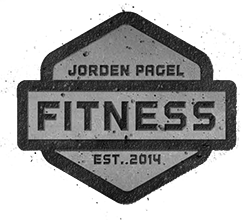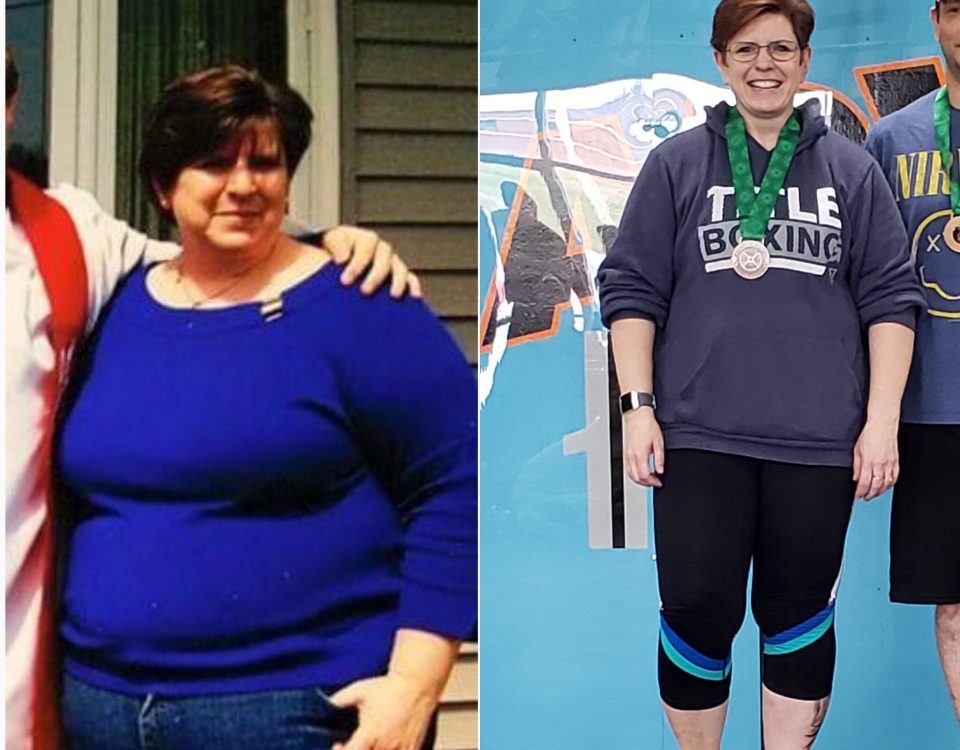Ab Training Done Right
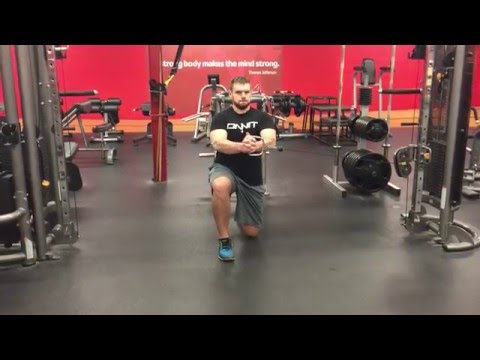
Ah, the 90’s…The Golden Age of life.
You could argue and say the 80’s were better, or that the technology and endless amount of entertainment we have at our fingertips today is better, but you would be wrong. So wrong.

I ‘member!
The 90’s brought us the best of everything: Nintendo 64, Seinfeld, Space Jam, Nickelodeon’s powerhouse TV lineup, and super-sizing at McDonald’s.
But the 90’s was not without its’ flaws, bringing us things such as 8-Minute Abs, and this:
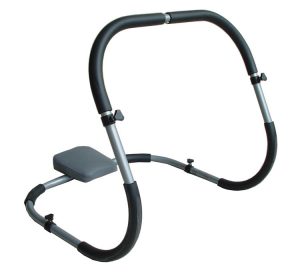
Thankfully we now know that not only are situps and crunches a horribly ineffective way to train abs, but they are downright dangerous for your back.
Ab training is far more than trying to sculpt a perfect six-pack; it’s about creating a strong and stable core that helps protect you from injury, increases performance, and okay yes, helps you look all kinds of sexy.
Let’s take a look at why ab training so much more than 8-Minute Abs…
Ab Training: Anatomy & Function
The muscles of your core serve a much bigger purpose than just giving you a reason to take off your shirt. They are actually essential to your ability to perform everything from squats, deadlifts and presses, to running, jumping, throwing, walking, and living.
Your core is comprised of three main muscle groups: the Rectus Abdominis, the Obliques, and the Transverse Abdominis.
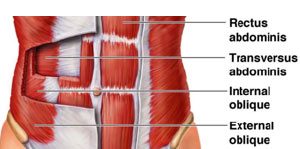
Rectus Abdominis: Also known as the six-pack, the rectus abdominis is the sheet of muscle that everyone thinks of when they think of abs and ab training. This muscle runs from the sternum down to the pelvis and is responsible for flexing the trunk and stabilizing the core
Obliques: The external obliques originate at the ribs and run along the rectus abdominis to the pelvis, while the internal obliques lie below the external obliques and connect the hipbone to the ribs. Their main job is to control the rotation and lateral flexion of the trunk.
Transverse Abdominis: This is the deepest of the core muscles and the one most often overlooked when training. Think of drawing in your belly button towards your spine; this is the transverse abdominis at work. The main function of this muscle is strength and stabilization of the spine. A strong transverse abdominis means a stronger and healthier lower back.
Working together, these muscles have two main functions, one being the prevention of unnecessary movements like unwanted rotation or flexion.
The second function is the transfer of force, which is done through core stability. The classic example is the squat/good morning. With a strong, stable core, you’re better able to hold the proper position coming out of a squat. With a weak core however, you may fall forward, turning your squat into a good morning.
A good ab training routine will address both these functions.
Training Your Core
First, I need to preface this by saying no amount of direct ab work is going to spot-reduce the fat covering them. For that, your diet needs to be on point.
Your need to build core strength in three primary areas: anti-extension, anti-flexion, and anti-rotation.
Let’s take a look at them along with some exercises to help you train each one.
Anti-Extension
The goal here is to prevent over-extension (or arching) of the spine. Anti-extension strength comes from the trunk’s ability to minimize lower back extension during movements.
Now, planks are good anti-extension exercises, but we’re looking to take our ab training to the next level. And one of the best next-level anti-extension exercises are deadbugs.
Now, they may look easy, but in order to make deadbugs an effective anti-extension exercise, you need to focus on a few key things:
- Your lower back should be pressed hard into the floor. If I were to try and slip my hand under you, I shouldn’t be able to.
- When breathing, focus on expanding your ribcage outward, without flaring it too much.
- Move slowly and under control.
Another great anti-extension exercise is the body saw. They’re like planks but, you know, next level.
Like any plank, gravity is going to be working against your abs and lower back. You’re naturally going to want to arch your back and let your stomach drop, but to get the most out of this exercise you have to maintain a neutral spine and keep the glutes engaged.
Anti-Lateral Flexion
Lateral flexion is the act of the body bending sideways. Anti-lateral flexion movements like loaded carries help train the core to resist lateral flexion. And while loaded carries are a great core strengthening exercise, single-arm carries are even better.
The goal of carries is to remain completely upright with no lateral flexion or side-bending whatsoever. Carries give you the added benefit of increased grip, back, and arm strength, as well as hip stability.
Off bench oblique holds are another great anti-lateral flexion exercise, essentially acting as a loaded side plank. Set up in a back extension machine, grab a weight, and hold neutral position for 20-30 seconds, then switch sides and repeat.
Anti-Rotation
Anti-rotation exercises are meant to help train rotational resistance of the lumbar spine. One of the best exercises for this is the pallof press.
The most common mistake most people make with this exercise is using too much weight. Select a weight that is challenging but allows you to go through the movement slow and controlled, while maintaining a vertical torso.
Another great anti-rotation exercise is the landmine. During this exercise you’re forcefully putting torque on the spine, so your core has to work to resist rotation.
To make anti-rotation exercises more challenging, they can be done from a kneeling or half-kneeling position. This decreases stability, forcing the trunk to work harder.
Your Ab Training Plan of Attack
Perform each circuit once per week, following your normal workout:
Instructions: Perform A, B, and C sequentially, resting 20 seconds between exercises and 60 seconds between circuits. Complete the circuit 3 times.
Ab Circuit One

Ab Circuit Two

If your core routine consists solely of planks and crunches, it’s time to bring your ab training to the 21st century.
Fat Loss Made Easy!
Subscribe to the JPF newsletter and get my 5-Day Fat Loss email course absolutely FREE! You'll learn how to create your own fat-shredding program in less than a week.
Plus you'll get the latest updates from the blog, exclusive offers, and other cool stuff.
